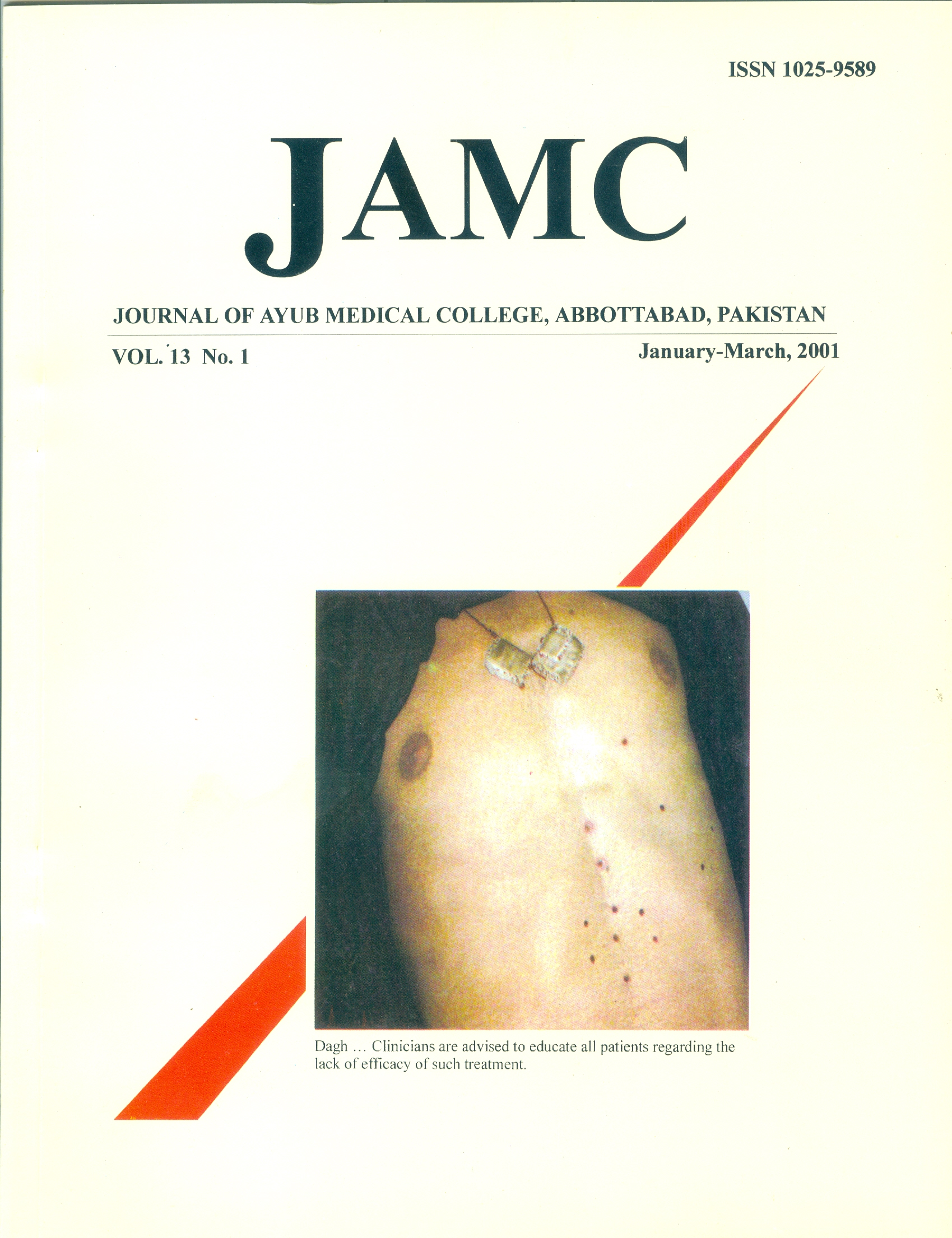PLASTINATION OF WHOLE BRAIN SPECIMEN AND BRAIN SLICES
Abstract
Background: The human dead body specimens are plastinated for teaching purposes in medical institutions, usingsilicone. The silicone impregnated whole brain specimens and brain slices do not give satisfactory results. Methods:
In the present study the brain specimens were plastinated with another polymer known as Polyester-Copolymer. The
brain specimens were first preserved and then fixed with 5% formalin. The specimens were then dehydrated and
degreased in a volatile solvent acetone. The specimens were placed in Polyester- Copolymer solution which penetrated
the brain tissue both intracellulary and intercelluraly. The specimens were then cured by gas method. Results: The
whole brain specimens and brain slices plastinated with Polyester-Copolymer were dry, odorless, handy and durable.
It also gives a clear visual contrast between grey and white matter in brain slices whereas the brain specimens
plastinated with silicone are flexible and sticky. There was no color contrast between grey and white matter.
Conclusion: The polyester impregnated brain specimens and slices are non-toxic and ideal for teaching purposes and
examinations. They require minimal aftercare. The whole organ serial sections of plastinated brain specimens will
help 3- dimensional study of the normal brain and will improve the assessment of brain pathology.
References
Hagens G. Plastination technique. Heidel. Plast. Folder. l986;
l-7.
Brickley H C. Walker A N and Jackson R L and Donnars R S.
The preservation of pathology specimens by silicone
plastination An innovative adjunct to pathology education.
Am.J. Clin Pathol. 1987;88(2):220-23.
Hagens G. Impregnation of soft biological specimens with
thermosetting resins and elastomers. Anat. Rec. 1979; 194;
-255
Klanes T and Wilhelm K. The current potential of plastination
Anat. Embr. 1987; 175:411-21.
Hagens G, Kriz. Plast. Folder. 1985;5-17.
Hagens and Tiedemann Plastination. Anat. Embr. 1984;210-
Schwab K H and Hagens G. Freeze substitution of
macroscopic specimens for plastination. Abstract. Sixth
European Anatomical Congress. Acta. Anat. 1981, 111(12)
Kieneke E W. Uhlmann K. Easy method of producing
biological specimens by molecular substitution. XII.
Int Anat Congr London. Abstr. 1985; 354.
Sittel C. Eckel H E and Sprinzl G M. Section plastination of
larynx for histology of whole organ sections. HNO. 1996;
(7)370-5
Stoka K and Schit G. Utilization of the postmortem
examination with emphasis on audiovisual aids. Arch Pathol.
Lab Med. 1987;11 U9):883-84.
Hawley DA. Marlin DC, Cook DC, Becsay D, Clark M A,
Pless J I; and Stanish S M. Specimens for teaching forensic
pathology, odontology and anthropology. Am.J. ForensicMed. Pathol 1991; 12(2): 170-174.
Deegner P and Berndta W. Process of preserving animal
object. U.S. Pat.l914; l, 163,645.
Acheson E D Formaldehyde in British chemical industry.
Lancet. 1981; 1:611-616.
Daschner F. Formaldehyde. Klinikartz. 1983; 12(1): 9-10.
Pabst R Wetche Gefahren bestehen beim umgang mit.
Formaldehyde. Anat, Anz. 1985; 161:154.
Bickley H C. Plastination, a new technique for anatomic
pathology and forensic science. Pathol. Update Series.
;2(16);2-8.
Bickly H C, Hagens G and Townsend F M. An improved
method for preservation of teaching specimens. Arch. Pathol.
Lab. Med. 1981;105: 674-676.
Downloads
How to Cite
Issue
Section
License
Journal of Ayub Medical College, Abbottabad is an OPEN ACCESS JOURNAL which means that all content is FREELY available without charge to all users whether registered with the journal or not. The work published by J Ayub Med Coll Abbottabad is licensed and distributed under the creative commons License CC BY ND Attribution-NoDerivs. Material printed in this journal is OPEN to access, and are FREE for use in academic and research work with proper citation. J Ayub Med Coll Abbottabad accepts only original material for publication with the understanding that except for abstracts, no part of the data has been published or will be submitted for publication elsewhere before appearing in J Ayub Med Coll Abbottabad. The Editorial Board of J Ayub Med Coll Abbottabad makes every effort to ensure the accuracy and authenticity of material printed in J Ayub Med Coll Abbottabad. However, conclusions and statements expressed are views of the authors and do not reflect the opinion/policy of J Ayub Med Coll Abbottabad or the Editorial Board.
USERS are allowed to read, download, copy, distribute, print, search, or link to the full texts of the articles, or use them for any other lawful purpose, without asking prior permission from the publisher or the author. This is in accordance with the BOAI definition of open access.
AUTHORS retain the rights of free downloading/unlimited e-print of full text and sharing/disseminating the article without any restriction, by any means including twitter, scholarly collaboration networks such as ResearchGate, Academia.eu, and social media sites such as Twitter, LinkedIn, Google Scholar and any other professional or academic networking site.










